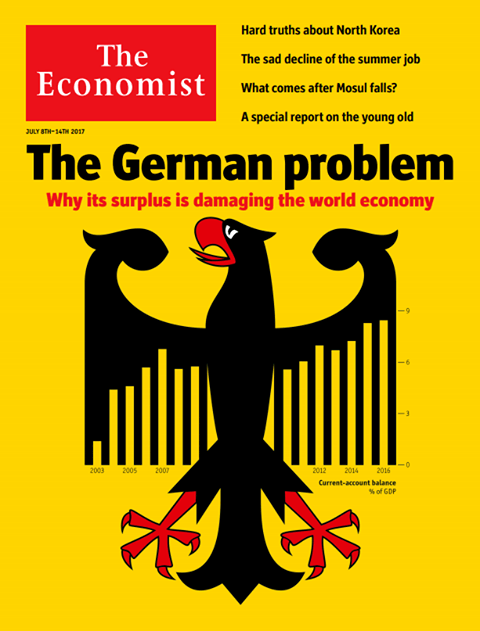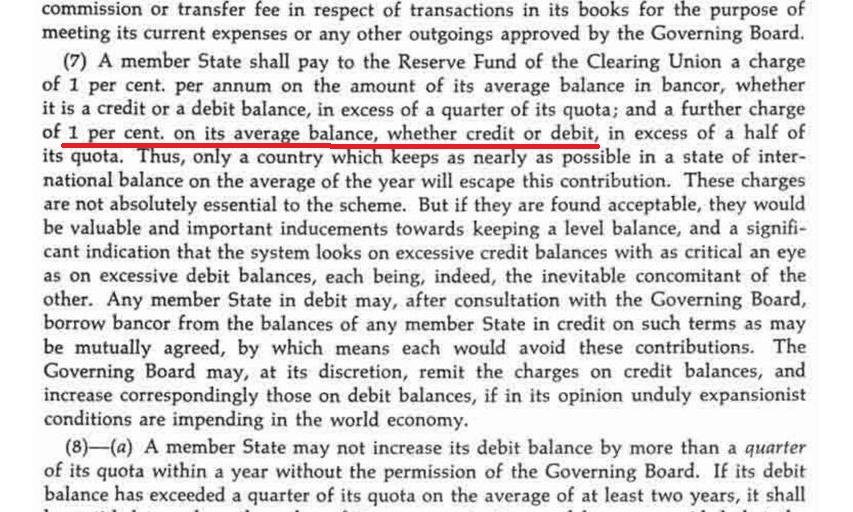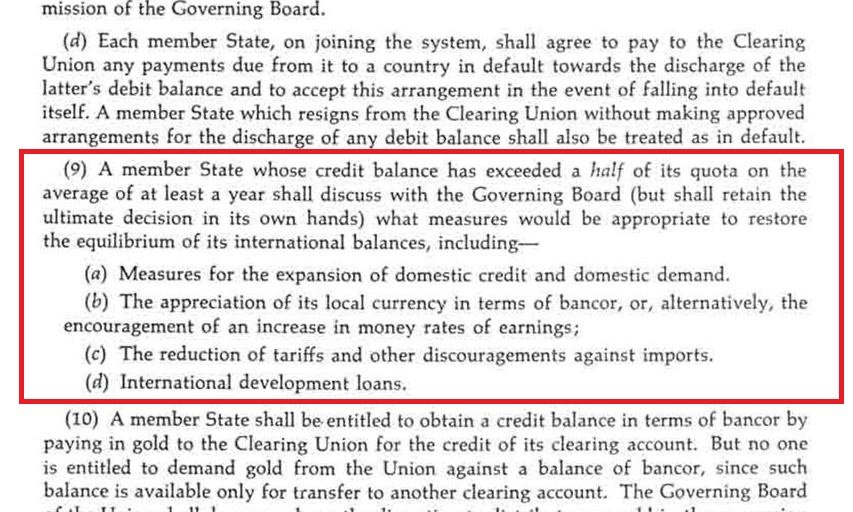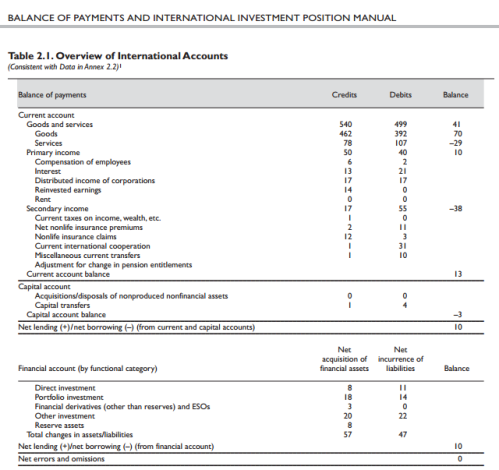It’s fairly common for economists to confuse accounting identities and behavioural relationships.
Question: What is the best way to find it?
Answer: The behaviour of output (at home and abroad) is not discussed in their analysis.
It’s not always the case that it’s true but a good way to find – check whether the economist is talking of the effect of changes in stocks or flows on output.
It’s also of course important to discern what someone is literally saying and what that person is trying to say. Economists aren’t the best communicators. For example, consider the sentence: “(fiscal) deficits increase growth and surplus reduces it”. This is far from accurate because the fiscal deficit is an output of a model (and everyone has a model implicitly), not an input. It’s better to state whether the fiscal policy under discussion is expansionary or contractionary. So let’s say that private expenditure rises relative to income for whatever reason, such as expectations of the future. This leads to a rise in output and hence taxes and the fiscal deficit will reduce and we have a rise in output coincident with a fall in fiscal deficit. But neither fiscal deficit or surplus caused that growth. At the same time, one should also try to check what the narrator is trying to say. So if someone says “deficit spending is needed”, he or she is actually trying to say, “an expansionary fiscal policy is needed”.
It doesn’t harm to be accurate or try to be accurate.
One of the worst mistake of this kind being discussed is using the identity (in the case of a closed economy):
G − T = S − I
where G, T, S and I are government expenditure, taxes, private saving and private investment respectively.
A careless look at this would led one to conclude that “deficits reduce investment”. What the economist who claims this is saying is that an fiscal expansion (rising government expenditure and/or reduced tax rates) decreases investment. The error in this is that, saving is thought to be constant. However, using a Keynesian stock-flow consistent model, it is not difficult to see that a fiscal expansion has an expansionary effect on output which will raise private investment and also private saving (assuming saving propensities are constant).
More generally, the equation is:
G − T + CAB = S − I
in the general case of the open economy. In the above CAB is the current account of the balance of payments. Also balance of payments accounting tells us that current account balance is equal to the net lending to the rest of the world. In the old balance of payments terminology, this is equal to the negative of the capital account balance.
So we have:
CAB + KAB = 0
Or
NL = CAB
in the modern balance of payments terminology, where NL is the net lending of resident economic units to the rest of the world.
This has led to various theories about how what causes trade imbalances. A careless conclusion which can be drawn by looking at the last equation is that an increase in private saving or a reduction in the government expenditure reduces the trade balance. Although in this case it’s true, this happens via a reduction of output.
Another strange hypothesis is to say that it’s net borrowing (the opposite of net lending) from the rest of the world which causes current account deficits. Some authors such as Michael Pettis have taken this to extreme.
Wynne Godley was one economist who made heavy use of the accounting identity.
G − T + CAB = S − I
In his view, the causal relationship linking the balances is via output at home and abroad.
In his 1995 article, A Critical Imbalance in U.S. Trade he says:
… an accounting identity, though useful as a basis for consistent thinking about the problem can tell us nothing about why anything happens. In my view, while it is true by the laws of logic that the current balance of payments always equals the public deficit less the private financial surplus, the only causal relationship linking the balances (given trade propensities) operates through changes in the level of output at home and abroad. Thus a spontaneous increase in household saving or a spontaneous reduction in the budget deficit (say, as a result of cuts in public expenditure) would bring about an improvement in the external deficit only because either would induce a fall in total demand and output, with lower imports as a consequence.
In this post, I want to highlight how capital flows can impact trade balances using my experience with experimenting with stock flow consistent models. Before that, it’s important to note a few things which are often forgotten.
An import by a resident economic unit is a decision to purchase a good or a service produced by a non-resident producer. Similarly exports of a nation is indicative of the relative competitiveness of producers at home in international markets. It cannot be said to be caused solely by capital flows. But it’s not so simple. Imports for example depend on incomes of resident economic units and capital flows can have an impact on imports because they can affect output and income.
But it’s vacuous to say that current account imbalances are caused solely by capital flows as many economic commentators claim implicitly or explicitly.
It’s easy to commit the mistake and think that imports depend solely on prices of goods and services. The world is not so simple. If every good or service is exactly the same, then it’s all about prices. However, producers produce thousands of different goods and services. So both price and non-price factors matter in determining imports. Even for similar goods, such as cars, consumers tend to prefer foreign produced cars over domestically produced ones even if the former is much more expensive simply because consumers are not just looking at the price but also quality, durability, looks and design and so on.
So both price competitiveness and non-price competitiveness are important. The way these things are modelled in literature is by using price and income elasticities. Imports depend on price via terms involving price and price elasticities and on income via terms involving income and income elasticities.
Where can we then look for causal connection of impact of capital flows on trade balance?
Before this it is important to keep in mind that gross capital flows can be compensated gross flows in the other direction. So to look for a causal connection in the accounting identity:
NL = CAB (or “CAB + KAB = 0″)
is silly to begin with.
So here are some ways in which capital flows can cause have an impact on trade balances.
- Capital flows cause exchange rates to move. With floating exchange rates, the exchange rate is the price which clears the supply and demand for assets of currencies. Note, in a correct model of exchange rates, supply and demand for all assets should be included not just “money” or “currency”. Exchange rate movement impact prices of goods and services. Since imports and exports depend on prices of goods and services (among other things), capital flows impact trade balance. It’s of course important to keep in mind producers’ own pricing behaviour: If the Japanese Yen appreciates by 30% against the US dollar, it’s not necessary that Japanese producers will raise prices of their goods in the U.S. market by 30%. They might raise the price only by 10%. But this is a digression, the important point being that capital flows cause changes in prices of imports and exports and hence the trade balance.
- Long term interest rates are both due to expectations of short term interest rates and portfolio preference for assets such as government bonds with long maturities. Long term Interest rates have an effect on aggregate demand which has an effect on output and income and hence imports.
- Capital flows can cause asset price booms, such as a stock market boom and via the wealth effect, cause changes in output and income and hence imports.
- There’s a further complication. Suppose there’s a large capital inflow into equities. This can cause switch of resident holders of equities (issued by resident economic units) into newly produced houses. This has an effect on aggregate demand and output and hence income and imports. This mechanism is slightly different from the wealth effect in point 3. It’s more a flow effect. Also in my opinion, it’s not easy to model this because one has to keep in mind gross capital outflows in balance of payments as well.
- Purchase of new houses by non-residents: Depending on regulations in the land, foreigners can directly purchase houses – such as a vacation house in Greece or to speculate on house prices such as in London. There can even be foreign investment funds which can speculate by buying houses and commercial property. This has the effect on aggregate demand and output and income and hence imports.
- Securitization allows banks to package loans on their balance sheet and sell it to investors. This allows banks to reduce risks and because of this they can make more loans which they may not have made without securitization. More lending means higher aggregate demand and output and income and affects imports.
- Direct investment: Direct investment is a more complicated example. Direct investment can raise output by various means, such as causing rising business domestically, employing people. They not only have an effect on the trade balance because of their international nature but also because their profits affect balance of payments. Also one has to be careful: sometimes direct investment is confused with the I in the identity: G − T + CAB = S − I. Needless to say, this is confusing the different meanings of “investment”.
- Large capital outflows can cause a large depreciation of the currency and impact a nation’s fiscal policy. If there are large gross outflows, a government may be forced to deflate domestic demand and output to reduce imports. The flip-side is that large capital flows can keep a bubble from busting for long.
On Twitter, T Srinivas mentioned to me that desire to accumulate reserves may cause nations to depress demand and hence lead to lower exports for other nations, citing the example of events following the Asian Crisis in the late 90s. This is partly included in 8. Although I don’t disagree, my points are more about flows caused due to changes in investor preferences themselves.
Of course it touches an important point. Low domestic demand and output in “surplus” nations leads to a positive net lending to the rest of the world. It’s more accurate to say that the current account deficit of “deficit” nations is because of low domestic demand and output than because of capital inflows to those “deficit” nations. So it’s not “saving glut” but demand shortage, beggar-my-neighbour policies.
In conclusion it is counterproductive to use the accounting identity
NL = CAB
(or the same identity in the slightly misleading language CAB + KAB = 0) to claim a causation from capital flows to current account balance.
An example is this paragraph from Michael Pettis:
… This is one of the most fundamental errors that arise from a failure to understand the balance of payments mechanisms. As I explained four years ago in an article for Foreign Policy, “it may be correct to say that the role of the dollar allows Americans to consume beyond their means, but it is just as correct, and probably more so, to say that foreign accumulations of dollars force Americans to consume beyond their means.” As counter-intuitive as it may seem at first, the US does not need foreign capital because the US savings rate is low. The US savings rate is low because it must counterbalance foreign capital inflows, and this is true out of arithmetical necessity, as I showed in a May, 2014 blog entry (link broken: archive.is link).
It’s an extreme viewpoint. During the crisis, there was a large foreign demand for US public debt but this didn’t cause a rise in U.S. imports. Similarly, a central bank intervening in the foreign exchange market and buying U.S. dollars from U.S. resident economic units doesn’t cause U.S. imports to rise in the few seconds. (Accounting identities also hold for time periods of seconds!) It’s balanced by gross U.S. capital outflows.
Capital flows can impact trade balances but it has really nothing to do with this identity. The causal link is still output and home and abroad (and some due to price changes of goods and services due to exchange rate movements).




